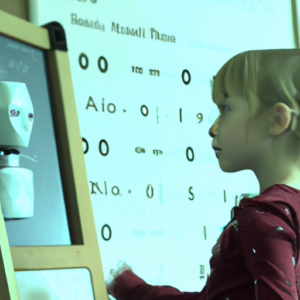Improving Accessibility in Design Decisions with Artificial Intelligence

In recent years, artificial intelligence (AI) has become an increasingly popular topic in the technology industry. As AI continues to evolve and become more sophisticated, it has the potential to transform many areas of our lives, including how we design and develop products and services. One area where AI has the potential to make a significant impact is accessibility. By helping designers and developers better understand the needs of people with disabilities, automating accessibility testing, and improving captioning and audio descriptions for videos, AI can help create more inclusive design solutions that meet the needs of all users. In this article, we will explore the role of AI in improving accessibility in design decisions, including the potential benefits, challenges, and risks associated with its use.
One of the ways that AI can improve accessibility is by helping designers and developers better understand the needs of people with disabilities. AI can be trained to recognize and interpret different types of disabilities and their corresponding needs. This can help designers create more effective solutions that meet the needs of a diverse range of users.
For example, AI can be used to improve captioning and audio descriptions for videos. AI algorithms can automatically generate accurate captions and descriptions for videos, which can be especially helpful for people who are deaf or hard of hearing. AI can also identify and describe visual elements in images, which can be helpful for people who are blind or have low vision.
AI can also be used to automate accessibility testing, making it faster and more accurate. This can save designers and developers time and ensure that accessibility issues are identified and addressed earlier in the development process. For example, AI can scan web pages and mobile applications for accessibility issues, such as missing alternative text for images or improper use of headings.
However, there are also potential challenges and risks associated with the use of AI in accessibility. One challenge is the need to ensure that AI algorithms are designed and trained with diverse data sets. If the data used to train AI algorithms is not representative of the diversity of people with disabilities, then the algorithms may not be effective for all users. Another challenge is the need to ensure that AI is used in conjunction with human expertise and input. While AI can be helpful in identifying accessibility issues, it is not a replacement for human judgment and expertise. Designers and developers still need to have a deep understanding of accessibility and how to create effective solutions for people with disabilities.
In conclusion, AI has the potential to greatly improve accessibility in design decisions. By helping designers and developers better understand the needs of people with disabilities, automating accessibility testing, and improving captioning and audio descriptions for videos, AI can help create more inclusive design solutions that meet the needs of all users. However, it is important to ensure that AI algorithms are designed and trained with diverse data sets and used in conjunction with human expertise and input. By doing so, we can create a more accessible and inclusive world for everyone.







